On a recent morning, Boston Mayor Michelle Wu began her day in the city’s Jamaica Plain neighborhood. She embarked on a 50-minute commute on public transportation, involving two buses and a more than 20 minute walk on streets where sidewalks abruptly ended. Wu was heading to the Boston Nature Center in Mattapan with Ammal, a preschool teacher and camp director there.
A few times a week, rather than heading right to her office in City Hall, Wu has been joining regular Bostonians on their morning commutes. The video series, which appears on the mayor’s TikTok and Instagram accounts, is meant to highlight—and hopefully help fix—transportation issues across the city.
Missing sidewalks are only one issue that Wu has encountered on these morning commutes. She has seen train cars too full to get on, waited 15 minutes for a bus, and passed bus stops without shelters. She has also seen transit wins: On a ride with Nichelle Tarver from Dorchester to Nubian Square in the Roxbury neighborhood, they rode the #23 bus, which Wu made free in 2021. It was one of her first initiatives as mayor. Wu, a Democrat, was elected in November 2021, becoming the first woman and first person of color in the role. Previously Wu served on Boston’s City Council for seven years.
“The hope is that the bus being free helps it go a little faster, because you see people getting in on the back door and the front door,” Wu says in that video. Tarver loves the free bus too and says it has made her mornings easier. In February, just days after the two commuted together, Wu announced that the free fares for that route (and two others) would be extended for two more years.
View this post on Instagram A post shared by Mayor Michelle Wu 吳弭 (@mayorwu)
View this post on Instagram
A post shared by Mayor Michelle Wu 吳弭 (@mayorwu)
The struggles of public transportation
Wu is no stranger to taking public transportation and understanding how a frustrating commute can affect someone’s day. “Commuting is such a fundamental part of how our city works, and also how every person feels about their day-to-day life,” she tells Fast Company. “I’m someone who has commuted for many years, taking my kids to onsite childcare in City Hall in a double stroller on the MBTA, so I know what it’s like to get close to the station and all of a sudden feel your body tense up because you’re not sure how it’s going to go.”
Ask any Boston resident, and they likely have complaints about the MBTA, which operates the transit system. The T (referring to the train) has seen extensive shutdowns for repair work, snarling commutes. On some tracks, trains travel as slow as 3 miles per hour, meaning most people can walk more quickly. Buses and trains are often delayed. In the past two weeks alone, trains on two separate lines derailed, causing delays. A recent Harvard Crimson op-ed declared that “T Stands for Terrible,” bemoaning a transit crisis that the author says seems illogical in a wealthy metro area.
The T has some unique issues: It’s not only the oldest subway in the U.S., but in all of the Western Hemisphere. Its “hub and spoke” design means you have to travel into downtown in order to travel anywhere out of the city (instead of just traveling directly to a neighborhood). This results in lots of congestion at certain parts of the system. The MBTA also has a history of financial issues. A 2009 MBTA Advisory Board report says the system was “born broke“; at the beginning of 2024, officials said they expected the T’s budget gap to exceed $567 million in fiscal year 2025.
But Boston isn’t alone. Public transportation across the U.S. is unreliable and often messy. And yet, it’s crucial not only for helping people get around their cities, but for reducing congestion, greenhouse gas emissions, air pollution, and more. The UN’s latest climate action report noted that shifting more trips to public transport (or walking) is “essential” to mitigating climate change.
“We’re in a moment where public infrastructure everywhere, and public transportation in Boston, is troubling, because we’ve faced decades of deferred maintenance, and now there’s a lot to dig out from,” Wu says. Her familiarity with the Orange Line over years of commuting, she adds, has shaped how she approaches policymaking. “I wanted to get a better sense of all the other parts of the system too,” she says of her commute series.
Giving residents a voice
When the series began, Wu’s office put out a call to anyone who wanted to show the mayor their morning commute. They reached out to organizations they’ve partnered with or labor unions they know. That’s how they found Tarver—she learned about the opportunity from her union rep, and since she uses the T regularly, she jumped on the chance.
“I thought it was amazing that the mayor would want to speak to an ordinary citizen like me, to get my thoughts on what the commute looks like and what advice I can give to the MBTA that would make it easier for people like me, who take the T everywhere, ” Tarver says. It was a chance to have a voice in a new way: Sure, citizens can attend town halls or write letters to the mayor, but sitting next to Wu on the bus, she says, was “an intimate setting to say, ‘These are my concerns.’”
Some changes have already come from these rides. After Wu’s commute with Ammal, a city spokesperson said they made short-term improvements around signal retiming for pedestrian safety (with long-term improvements planned), as well as street sign replacements, to make navigation easier. “Some of the issues raised during Ammal’s commute are on roads maintained by the state,” the spokesperson noted. “In these cases, the city will work with the state to discuss potential changes.”
How cities can find solutions
This links to a larger issue with Boston transit, and the mayor’s challenges in fixing it. The state actually operates the MBTA; it’s the Massachusetts Bay Transportation Authority. Only in September 2023, after years of advocacy (including from Wu herself as a city councilor), did Boston get a seat on the MBTA’s board. But even though it doesn’t control the transit system, Wu says the city can still improve things.
“We don’t control the subway or commuter rail, and the buses and the bus drivers are under the MBTA’s jurisdiction and authority. But municipal government is in charge of our streets and how roadway is allocated,” she says. “So our work to create dedicated bus lanes is directly improving public transportation.” Buses are the fastest way to make changes to public transit, she adds, because you don’t have to lay new track or build new tunnels, and you can add more capacity easily. The free fare program that Wu championed was also a way to use city funding to improve transit.
Riding with residents reveals the little details that can have a big impact on a commute. Policymakers may focus on the biggest line items, Wu says, like the tracks or the train signals. But accurate countdown clocks, accessibility, and ways to make commuters comfortable in all kinds of weather can do a lot to make trips less stressful.
Wu has yet to encounter a “major crisis” on one of these morning commutes, though she admits they happen all too frequently in Boston. “One of the most consistent themes that has emerged from going on lots of commutes on lots of different routes is the unpredictability of it all,” she says. “I’ll usually ask, ’How long does this take on a typical day?’ or ‘How does this usually go?’ More often than not, I get a big shrug or the person laughs, because anything could happen on any given day on a system where the infrastructure is older and needs updating.”
Wu has been doing one or two commutes with residents a week, and she plans to keep it up for the foreseeable future. She says it has been informative, and even fun. “I hope that by showing a little bit of how residents across the city are starting their day, that we can push for more improvements, faster progress, and focus on what really matters to people.”
It’s also a lesson for how to deal with all the major problems that plague citizens in any city. “There’s so much need in our communities right now. Housing costs are out of reach for far too many, public infrastructure needs so much investment from decades of deferred maintenance. The risks that come with climate change, like flooding and extreme heat, are more and more visible,” she says. “The only way for a solution to really have an impact is for it to match the real life experiences of residents. There’s no better experts on how to solve a problem than people who are living it and navigating this every day.”



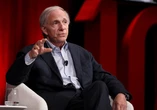
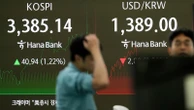
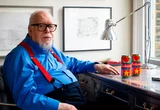
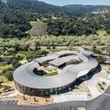
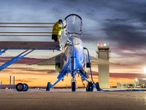
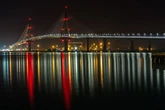
No comments